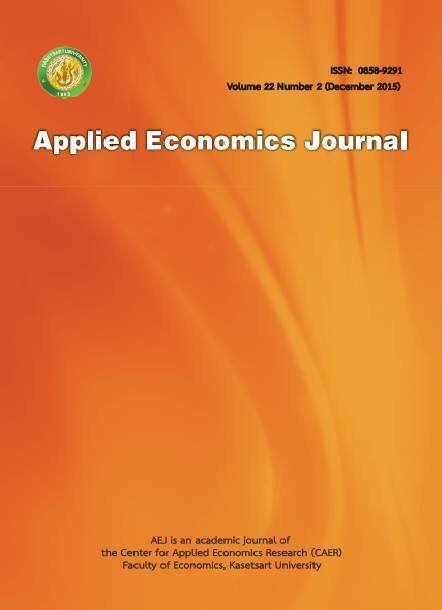ASEAN Long-Run Tourism Elasticity Demand in Thailand
Main Article Content
Abstract
This paper developed a model of the long-run demand for tourism in Thailand from nine countries in ASEAN. The aggregate tourism demand model was developed, and the elasticities were estimated using appropriate econometric methods based on characteristics and limitation of the available data in each country. The results show that, ASEAN tourist markets are more important than Europe markets in terms of number and growth of receipts, and each market have difference price elasticities. The economic growth of ASEAN countries in the last 2-3 decades helped stimulated the expansion of ASEAN tourist market in Thailand. Most tourists from ASEAN countries to Thailand were more sensitive to Thai price than cheaper prices from competing destinations resulting in higher own price elasticities that cross price elasticities. Moreover, it was observed that for the countries bordered by Thailand such as Lao PDR., Malaysia and Myanmar, their price elasticities were higher than other countries. That is because people from these countries often traveled to Thailand on weekend for shopping, relaxing and enjoying night entertainment, hence the greater flexibility to change plan if price rises. This study suggests that Thailand should develop a specialized marketing plan to accommodate each individual countries based on their elasticities. Moreover, Thailand should seize the opportunity of growing ASEAN tourists markets, propelled by rising economic growth and liberalization of ASEAN in 2015, in screening and specializing in high-end market.
Article Details
The paper is published under CC BY-NC-ND, in which the article is freely downloaded and shared in its original form non-commercially and its citation details are identified.


